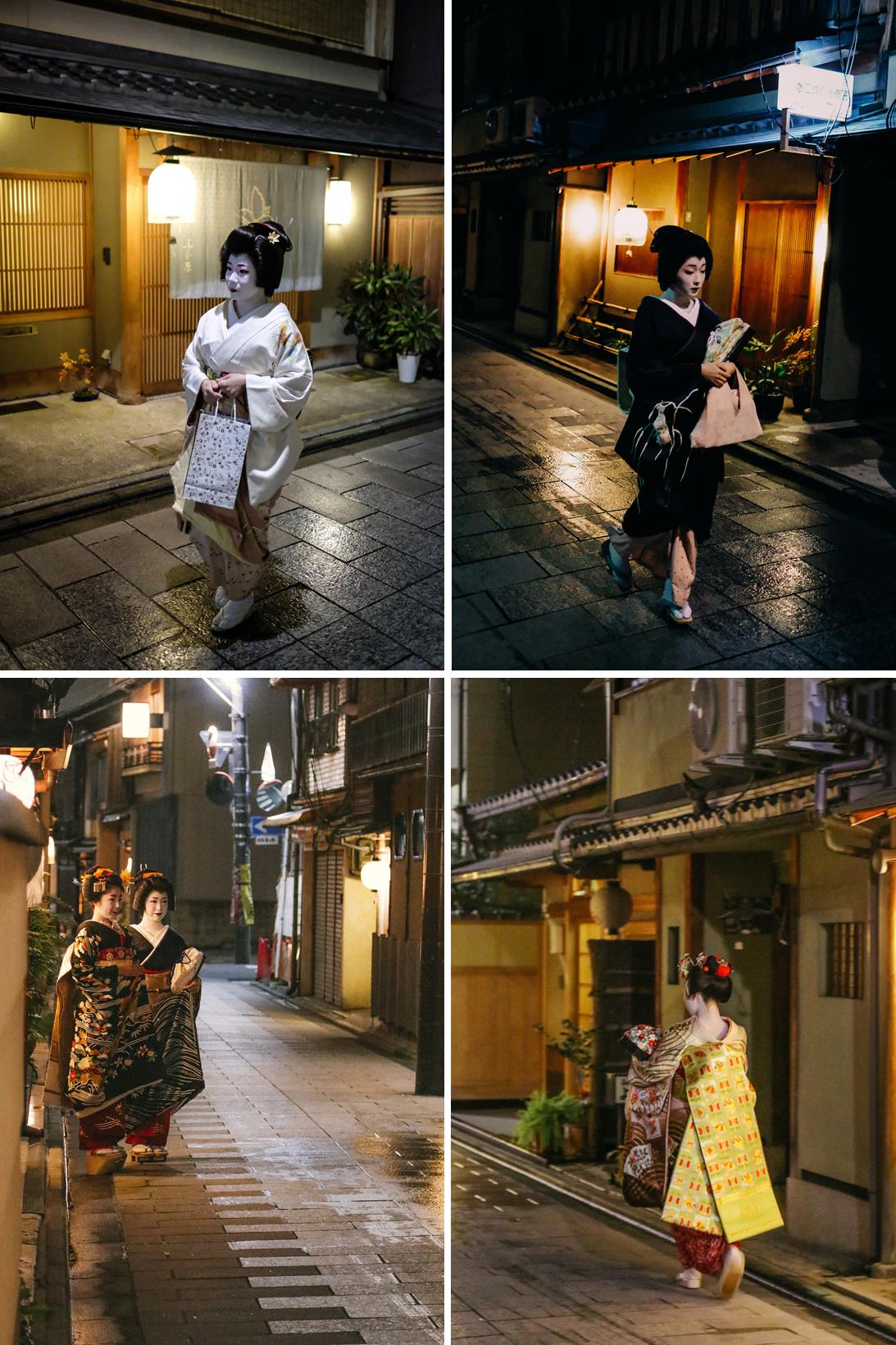Continuing our tour around Honshu, Japan’s main island, and following on from last month’s Newsletter (read about that), here are a few more of the many highlights from the three week trip Julian and I took to this fascinating country.
The Food
You could easily plan an entire journey to Japan based on food alone, as each region purports to have its own specialty such as snow crabs from Hokkaido, beef from Kobe and the okonomiyaki savoury pancakes from Hiroshima. In Tokyo you will find some of the finest dining. We ate at one of the best sushi restaurants in the city. The food was lovingly prepared in front of us by our personal chef. The fish was straight from Tsukiji Market that morning and so fresh the raw prawn twitched on its bed of rice before I ate it.
It’s traditional for Japanese restaurants to serve just one type of cuisine, so you get sushi restaurants or tempura restaurants or ramen restaurants, which works well until you fancy fish and your husband wants wagyu. A Street Food Tour is a great way to navigate the restaurant scene. Guided by a local, we ate yakitori skewers washed down with Yesibu beer in an izakaya, a small Japanese-style pub where locals gather after work. We learnt about local food customs whilst delving into a huge bowl of sashimi beautifully presented on a bed of ice and then joined the throngs of locals sitting on beer crates eating all sorts of cuisine at the Ebisu-yokocho food arcade.
Hiroshima Memorial Park
Whether you know a little or a lot about the atomic bomb that exploded over Hiroshima on 6th August 1945, you cannot help but be moved when visiting the excellent Hiroshima Peace Memorial Park. It’s a powerful place and definitely worth a night or two in Hiroshima. Julian and I spent hours going around the Museum, filling in lots of blanks in our understanding of the event and witnessing 3D images of the hellish scenes that happened on that fateful day. For quiet contemplation we wandered around the leafy Memorial Park, before looking opened mouthed at the blasted remains of the Atomic Bomb Dome.
If you spend a couple of nights in Hiroshima, you can easily do a half day trip to the island of Miyajima, famous for its 12th century waterside Itsukushima Shrine and its rust-red torri gate which appears to float offshore.
Glimpsing a Geisha
Japan has a lot of fakes. Hordes of young girls dress up for days out in brightly coloured kimonos, shuffling along in wooden flip flops hoping to have their picture taken. But when you spot the real thing you’ll know. With their completely white faces and steely determination not to be photographed, glimpsing a geisha (or geiko which is the Kyoto name for geisha) is a moment of pure magic. However to get the photo it did require Julian to partake in the slightly odd holiday activity of lurking in dark Kyoto alleys and hanging around on corners between 5:30pm and 6:00pm. This is the time when the intricately styled hostesses start work. Blink and you may miss them hop in and out of tea houses where they serve sake to rich business men.
The Toto Washlet
Okay, finding toilets a highlight of a country is a bit weird. But trying your first heated toilet seat was a bit of an “ooooh!” moment for me and such a pleasure. Japanese toilets are in one word, amazing, and the most popular is the Toto Washlet. Walk into the bathroom and the seat lifts automatically. Finish your business and be sure to rise before the automatic flush kicks in. In some toilets you even have the sounds of gentle water flowing and birds tweeting to mask your own toilet sounds. On the little control panel by the side of the toilet there are lots of options and Julian and I often found ourselves discussing the merit of soft pressure versus normal, or whether we preferred the oscillation movement. You’d think these toilets are only found in 5* establishments but they were even in your local public conveniences and I have to say, every toilet I went into, whether in the local park or on the train, was spotless. Returning back to a DIY toilet in the UK with no hair dryer for your bottom left me a little disappointed!
Staying in a Ryokan
Few overnight stays tell you as much about a country's culture than a stay in a ryokan, a traditional inn, where it's all about simplicity and omotenashi, the ancient art of Japanese hospitability. Sweet little ladies scurry around looking after your every need. Rooms are simple and uncomplicated; tatami mats on the floor, a low table and chairs during the day and futons at night. But thankfully the walls are not made of rice paper.
You do have to adhere to some rules like set dinner times and place specific footwear - bare or stockinged feet on tatami mats, special slippers for the toilet and different sandals for the communal areas - but you soon get into the groove and there is nothing better than spending day and night swanning around in a cotton yukata.
Dinner is always a traditional Kaiseki meal consisting on nine exquisitely presented courses show casing the different local ingredients and Japanese cooking styles.
Many ryokans have onsens attached. These are hot springs where the water really does leave your skin soft. But again a list of rules prevail: men and women bathe separately and in the nude; you must wash yourself at the taps beside the onsen before entering and tattoos are not allowed as they are associated with yakuza gangsters. But a public onsen is a brilliant snapshot in to Japanese daily life. Having said that, I did prefer our own private onsen set out on our balcony where we could share the experience of breathing in the fresh mountain air perfumed with the aroma of wet cedar whilst we poached.
A Night at the Museum
Sitting on a concrete pier next to a giant spotty yellow pumpkin wasn’t something I first thought of when planning our trip to Japan. But liking a bit of art and architecture, the lure of an “art island” sounded really interesting and a different take on the Japan you would normally expect to experience.
There are around 3,000 islands in the Seto Inland Sea, many of which remain quiet and uninhabited. But Naoshima has been turned into the home of an impressive collection of contemporary art, which just sneaks up on you as you walk or cycle round the island - in galleries, hotels, houses and outside.
One of the most impressive galleries is the Chichu Art Museum. Designed by the renowned Japanese Architecture Tado Ando (for my Manchester clients you will know his work as the big grey wall in Piccadilly Gardens, but don’t let that put you off). It is built completely underground with open courtyards and skylights that keep the space bright and airy and it’s architecturally magnificent. The centrepiece is one of Monet’s large-scale water lily scenes (part of the series that is housed at the Musée de l’Orangerie in Paris).
There are also traditional houses that have been converted in to art projects, one of which houses James Turrell’s amazing Backside of the Moon. An installation that appears pitch black at first, slowly revealing itself in an unexpected way, only after your eyes have adjusted to the nearly compete darkness. I don’t normally go for this sort of thing, but it was breath-taking.
Then at night we stayed at Benesse House, a boutique hotel set inside a contemporary art gallery. As a guest you have free reign to roam around, even after closing. So we found ourselves padding the deserted rooms of the galleries in our pyjamas flouting the “no photography” signs.
But you don’t have to be an art aficionado to enjoy Naoshima’s charms. The island has kept its laid-back, beachy vibe and it’s a great place to take it easy for a few days.
If you are interested in a trip to Japan, please do get in touch and I can put together a curated taste of the cultural richness and diversity of this wonderful country for you.
{Pictures: All by Julian and Lesley-Ann}














